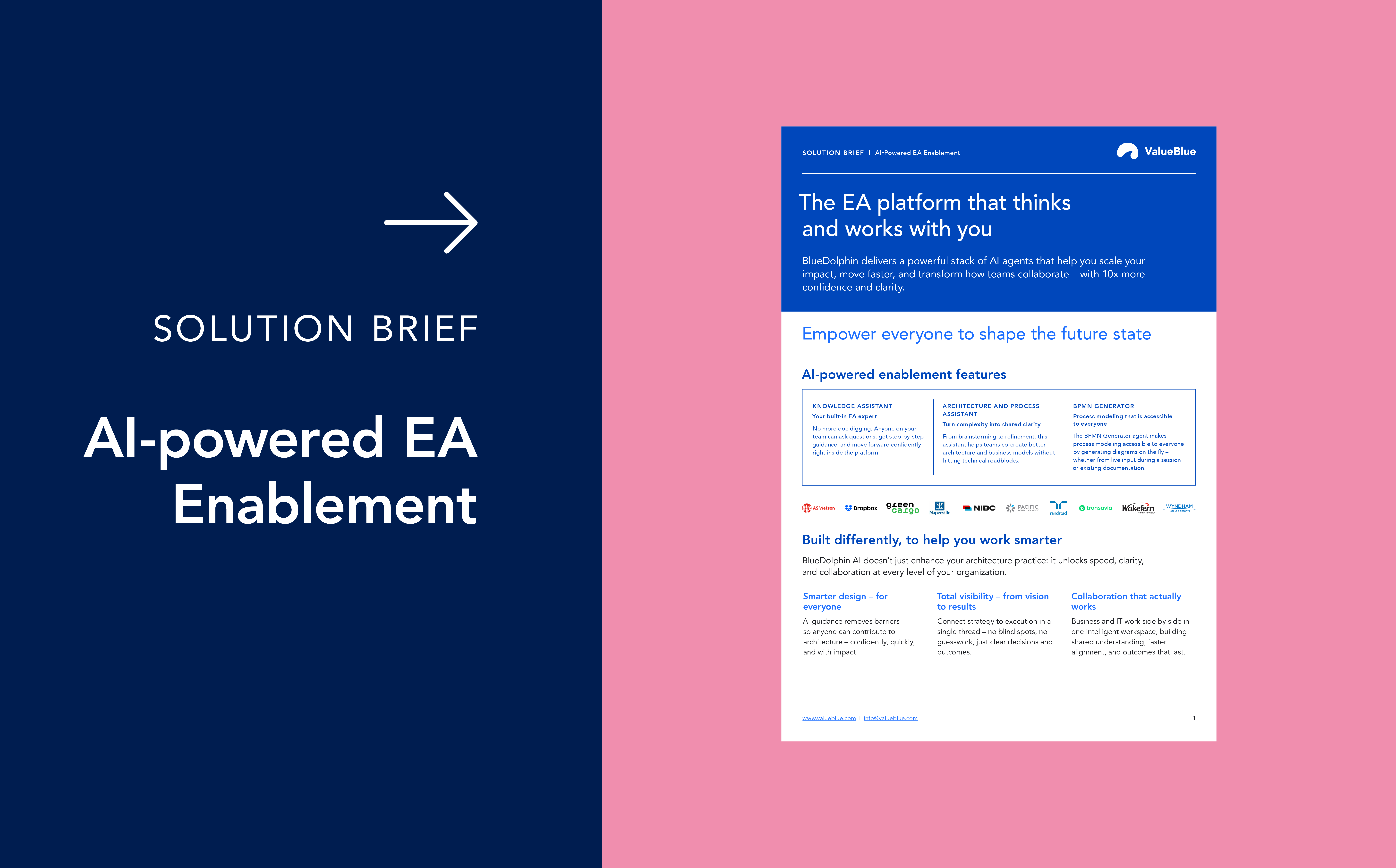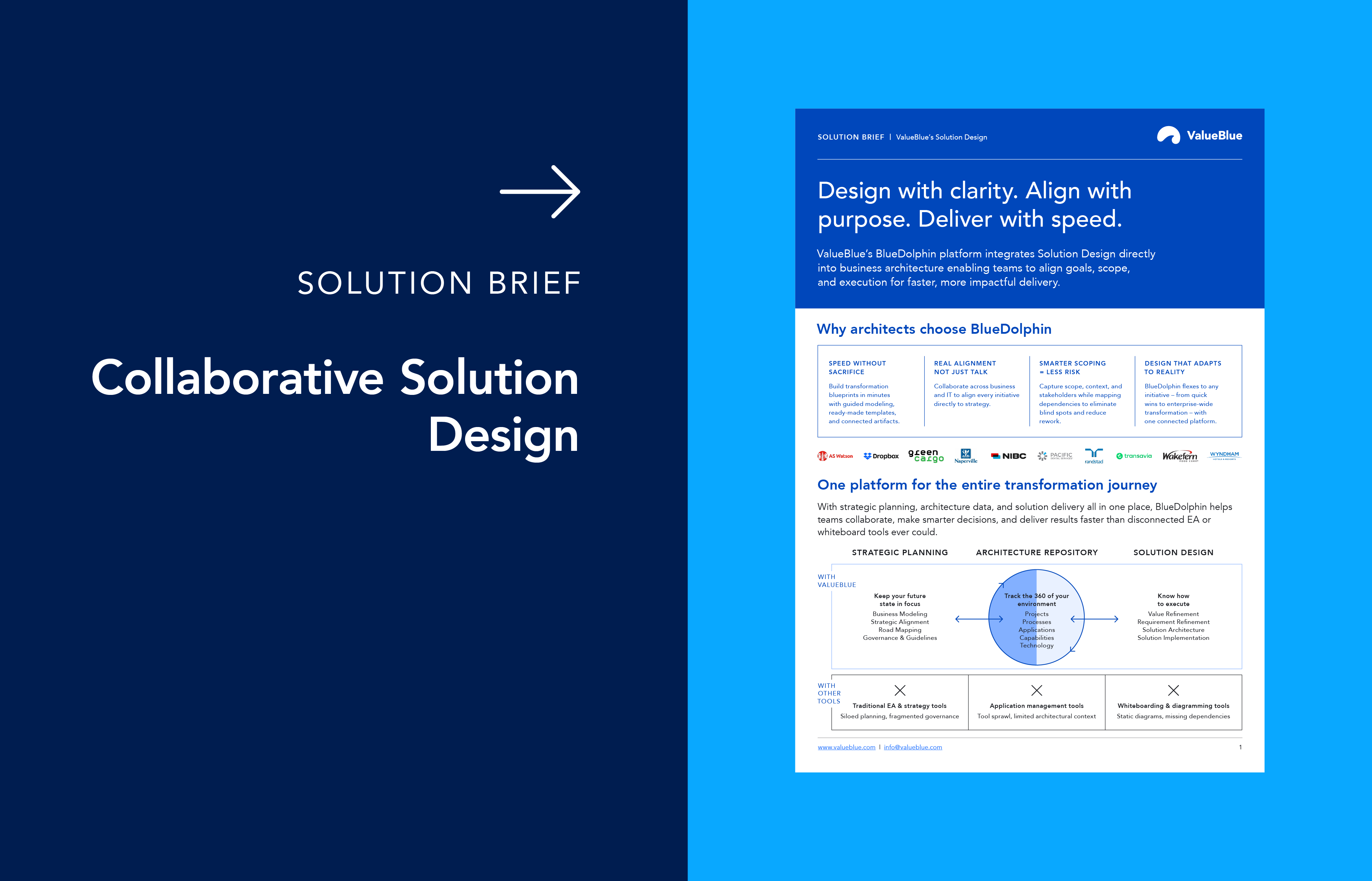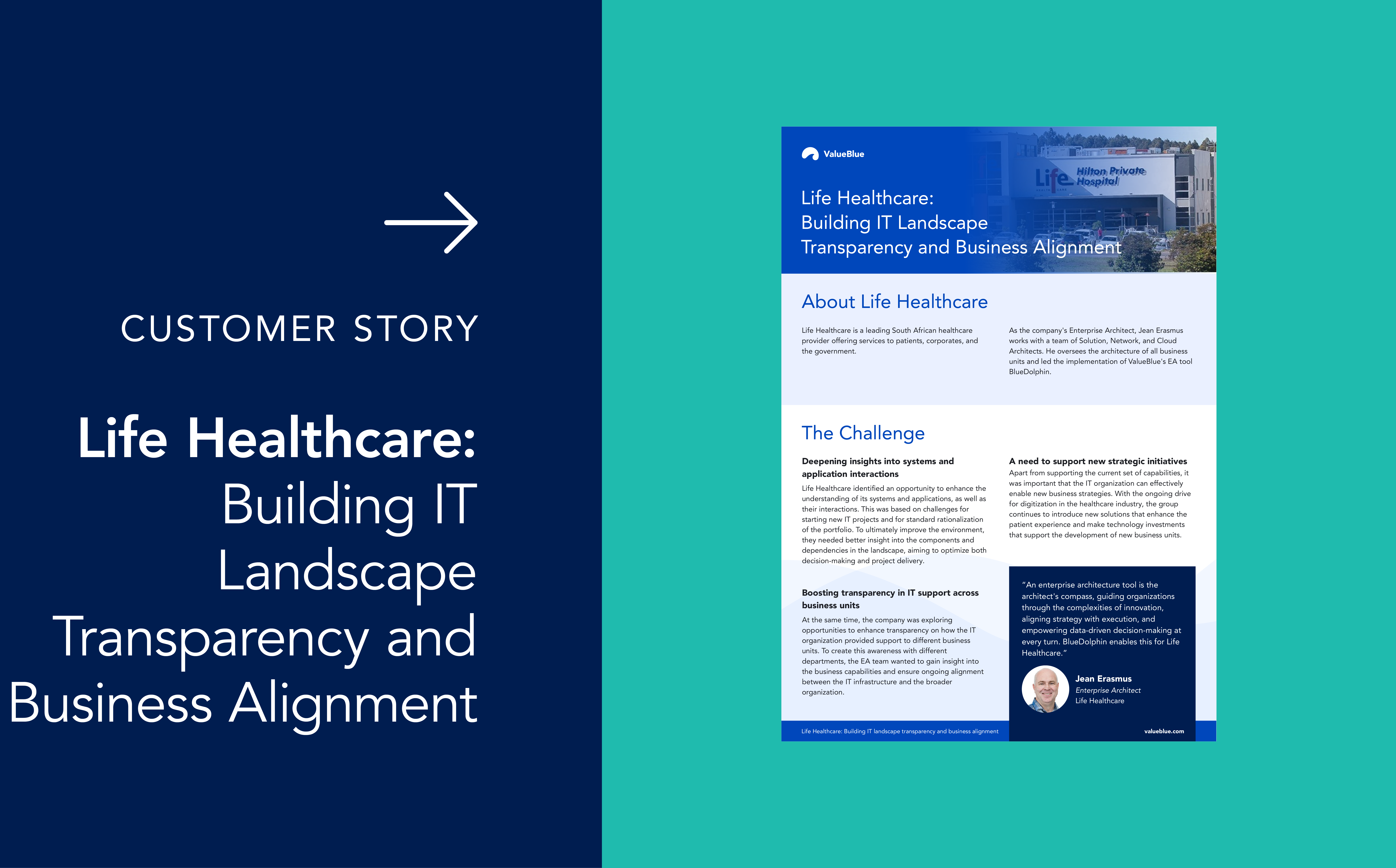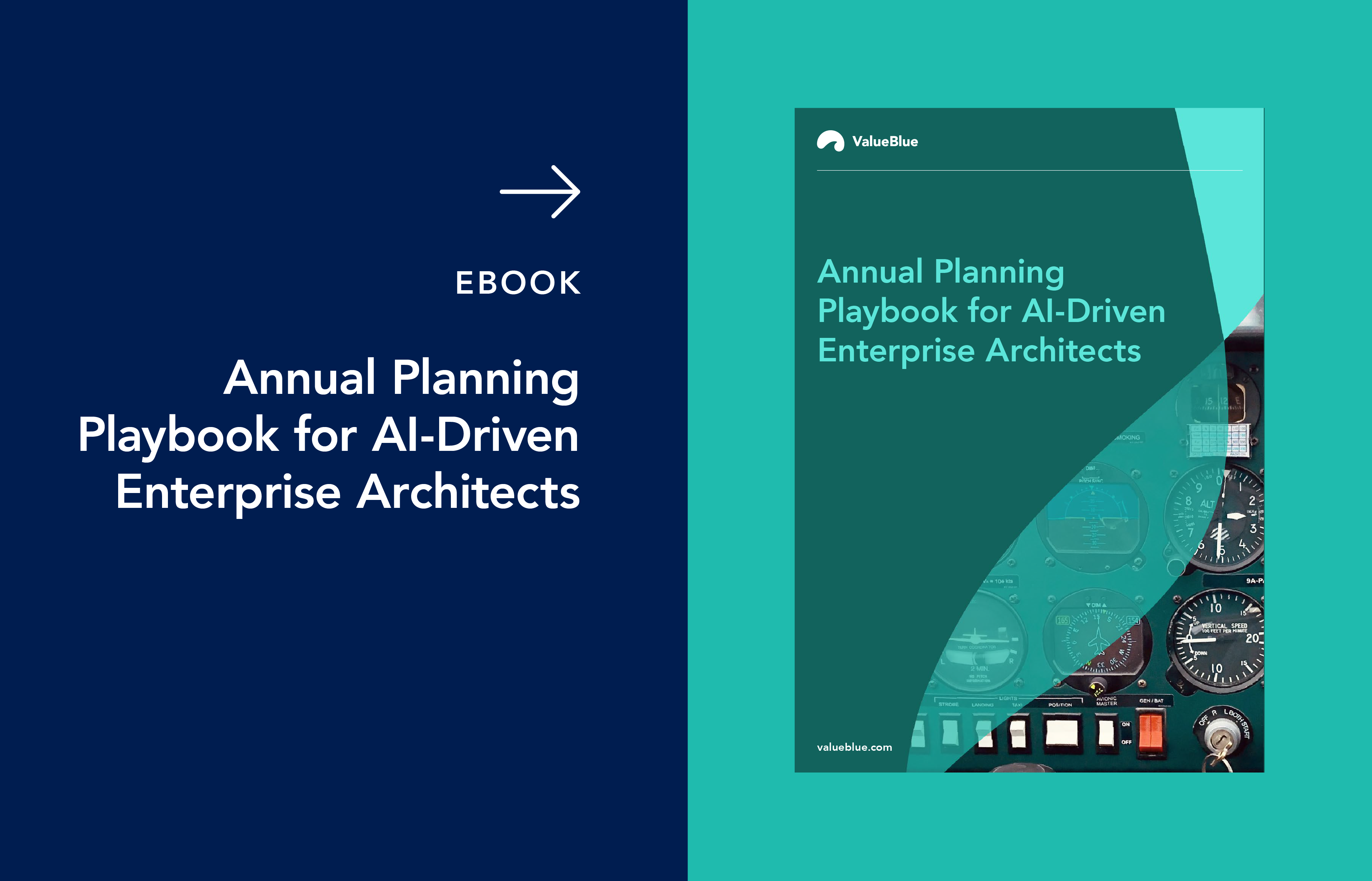Enterprise Security Architecture: A Quick Guide
As digital ecosystems grow more complex, so do potential risks. Security breaches can disrupt operations, expose sensitive data, and create ripple effects across supply chains and business ecosystems. To manage these risks at scale, organizations need a structured approach to embedding security across their digital landscape. With Enterprise Security Architecture (ESA), they can proactively manage risk, maintain compliance, and build more resilient digital operations.
In this guide, we explore ESA, why it matters, and the frameworks and tools that support its effective implementation.
What is Enterprise Security Architecture?
Whereas Enterprise Architecture (EA) maps and analyzes the enterprise as a whole, Enterprise Security Architecture applies security standards across every layer of the architecture. It serves as a comprehensive framework that protects information systems and digital assets from cyber threats. This includes the integration of security principles, policies, and technologies for a cohesive security strategy.
Why is Enterprise Security Architecture important?
While adding security controls to modern IT infrastructures has clear benefits, the Enterprise Security Architecture framework offers several distinct advantages.
Integrated risk management
Too often, companies make security decisions in isolation from business priorities, leading to inefficient or misaligned risk responses. ESA bridges the gap between security and business goals by mapping risks to capabilities, data flows, and key assets. This shifts the conversation from "How do we mitigate threats?" to "How do we safeguard our most valuable assets?".
Compliance and governance
With tightening global regulations, many businesses must ensure compliance with relevant requirements. Examples include GDPR for digital privacy, HIPAA for healthcare data, and DORA for the financial sector. ESA helps organizations document their policies, controls, and data handling practices while ensuring they are traceable and audit-ready.
Agility with assurance
As enterprises embrace cloud, DevOps, and composable architectures, Enterprise Security Architecture ensures that innovation does not outpace security. It embeds protective measures early in the design process and enables teams to move quickly with clear, predefined guardrails. This allows organizations to scale and adapt without introducing unmanaged risk.
Trust by design
With third-party integrations, decentralized teams, and AI adoption, ESA supports zero-trust principles by enforcing wide access controls. It ensures that security isn’t just reactive, but built into system interactions and data sharing.
Core components of Enterprise Security Architecture
To implement Enterprise Security Architecture effectively, organizations rely on several foundational components that guide decision-making, design, and governance. Together, these elements form a practical cybersecurity architecture framework that aligns with business priorities and evolving risk.
1. Security Principles and Policies
These define the foundational rules that guide how security is approached across the organization. Examples include secure-by-design, least privilege, and defense in depth. They provide consistency and help align security decisions with business goals.
2. Control Frameworks
ESA uses standardized frameworks like NIST CSF, ISO 27001, or CIS Controls to structure and assess security controls. These frameworks help ensure that risk mitigation efforts are consistent, measurable, and auditable.
3. Capability Mapping
Enterprise Security Architecture maps security capabilities (like identity management, data protection, or incident response) to business functions. This ensures that efforts are directed toward key operations and critical security risks.
4. Architecture Views and Models
Visual representations – such as layered diagrams – illustrate how security is embedded across business processes, applications, data flows, and infrastructure. These models help bridge communication between technical and business stakeholders.
5. Risk and Threat Models
ESA incorporates tools to assess, model, and prioritize risks based on their impact on the business. These models help identify vulnerabilities, define appropriate controls, and inform strategic planning.
6. Governance Structures
Clear roles, responsibilities, and accountability mechanisms ensure that security decisions are enforced consistently across the enterprise. This includes integration with broader enterprise architecture and IT governance.
Want to see how this works in practice? Book a short BlueDolphin demo.
Learn how you can use Enterprise Security Architecture in your business.
Integrating Enterprise Security Architecture with Enterprise Architecture
Implementing Enterprise Security Architecture at scale requires more than policies and frameworks – it demands visibility, consistency, and ongoing alignment between business and IT. Enterprise Architecture platforms like BlueDolphin provide a central foundation for embedding security into every layer of the enterprise.
Here’s how you can use an Enterprise Architecture tool to support ESA efforts:
1. Define and scope the security architecture
Map all applications, data flows, integrations, and infrastructure components in a central repository. EA tools like BlueDolphin allow you to document each asset’s risk level, lifecycle stage, and related security details, which helps you identify gaps across the enterprise.
2. Link risks to business capabilities
Use capability mapping to link risks with the processes, data, and capabilities they impact. This ensures a more strategic approach, helping security architects align security measures with business priorities.
3. Establish governance and accountability
Establish clear ownership of security policies, standards, and exceptions. In BlueDolphin, you can define governance structures, assign roles, and link responsibilities to specific assets, systems, or compliance obligations, ensuring accountability and traceability.
4. Design and plan secure solutions
Create architecture views and design scenarios to incorporate security controls in future state models. Whether planning a cloud migration or a new customer-facing platform, you can visualize the security impact and adjust accordingly.
5. Track and report on security posture
Monitor security issues in their current state, how teams are addressing them, and where further action is needed. You can create reports and dashboards to keep stakeholders informed and engaged.
While an EA platform provides structure and oversight for Enterprise Security Architecture, organizations also depend on various security tools. These include identity and access management (IAM) systems, security information and event management (SIEM), endpoint detection and response (EDR), and vulnerability scanners. The right tools and technologies are foundational to building an effective and robust ESA framework.
Common Enterprise Security Architecture challenges and solutions
Implementing Enterprise Security Architecture can significantly improve risk management frameworks, but it’s not without challenges. Below are some of the most common obstacles teams face, along with strategies to overcome them.
Siloed decision-making
ESA can fall short when security, IT, and business teams operate in silos. Without early collaboration and a shared understanding of business goals, security controls may be misaligned or poorly communicated. To avoid this, involve key stakeholders early and make sure security efforts clearly support business priorities.
Limited visibility across the organization
Without visibility into how systems, data, and applications connect, it becomes hard to spot vulnerabilities or understand the impact of controls. Organizations should invest in processes that reveal cross-functional dependencies and make the architecture easier to understand.
One-time assessments instead of ongoing adaptation
Threats, technologies, and business needs evolve quickly. Relying on static assessments or occasional updates can leave critical gaps. Businesses should keep Enterprise Security Architecture frameworks up to date through regular reviews that reflect changes in systems, risks, and strategy.
Lack of skilled resources
Many organizations struggle to implement ESA as they lack staff with the right mix of security, architecture, and business knowledge. This often leads to delays, inconsistent practices, or overreliance on external consultants. Addressing this challenge requires building internal capability through cross-training, hiring, or partnering with the right experts.
Turn your security strategy into action
As cyber threats grow more sophisticated and business environments become increasingly interconnected, Enterprise Security Architecture has become essential to building secure, scalable digital operations. By aligning security with business goals and embedding protection across the organization, ESA offers a clear security architecture framework for long-term resilience.
Ready to implement your Enterprise Security Architecture strategy? Discover how BlueDolphin helps teams visualize, plan, and govern their security framework as part of a connected enterprise strategy.
Book a demo
Want to discover how our tool can further enhance your Enterprise Architecture? Fill in the form!
Have questions about Enterprise Architecture best practices?
Our experts are happy to help.





-Apr-12-2023-09-54-53-7420-AM.png?width=1536&name=MicrosoftTeams-image%20(83)-Apr-12-2023-09-54-53-7420-AM.png)